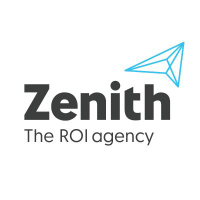Programmatic ad spend will have grown by 24 percent over the course of this year, and will grow a further 19 percent next year, according to Zenith’s Programmatic Marketing Forecasts published today. This will mean that in 2019, 65 percent of all digital media will be traded programmatically. But while the growth of programmatic trading continues to be strong, Zenith says it’s slightly slower than expected, due to a mixture of new data laws and investment patterns within the industry.
Zenith says growth is being driven by the fact that the breadth of formats which can be traded programmatically is improving all the time, specifically with mobile video and audio formats increasingly available programmatically.
The company believes that very soon there will be very little which cannot be traded programmatically, and from there is it simply a question of how quickly each country embraces total automation. Zenith predicts that by 2020, 99 percent of digital media will be traded programmatically in Canada.
“We expect all markets to follow Canada and use programmatic trading for all digital media transactions eventually,” said Zenith’s report. “Indeed, it’s only a matter of time before programmatic trading becomes the default method of trading for all media.”
For the moment, adoption of programmatic trading is highest in the US, where Zenith says 83 percent of all digital media will have been traded programmatically this year. Given the scale of the US’s total digital ad spend, this means nearly half of all programmatically traded ad dollars will have been spent in the US ($40.6 billion out of a global total of $84 billion).
Canada comes in second, with 82 percent of digital media traded programmatically. In Europe, the UK and Denmark lead the way, with 78 percent and 75 percent of digital dollars spend programmatically in each country respectively.
Progress towards total adoption has been slightly slower this year than expected, which Zenith attributed to a couple of factors. One was the introduction of the EU’s general data protection regulation (GDPR) which restricted the data available for programmatic transactions, making it simultaneously more expensive and less attractive.
But Zenith thinks the primary cause was that advertisers have been investing heavily in making programmatic trading more effective, at the expense of ramping up the scale of programmatic buying as quickly as they might otherwise have done.
“The scale of operational restructuring to make the most of it is both extensive and expensive, though, and advertisers are spending more carefully while they invest in infrastructure and data and review the quality of media,” said Zenith’s global head of digital and innovation, Benoit Cacheux. “All programmatic advertisers need a strategy for acquiring the best and most comprehensive data available, and to treat this data as a vital corporate asset.”





